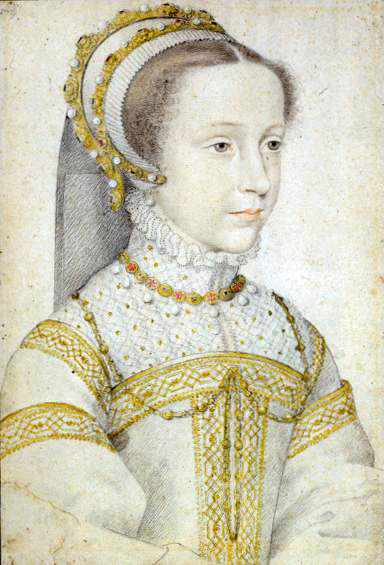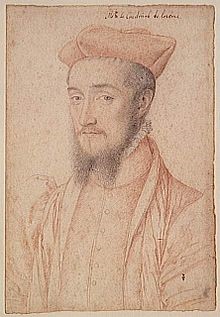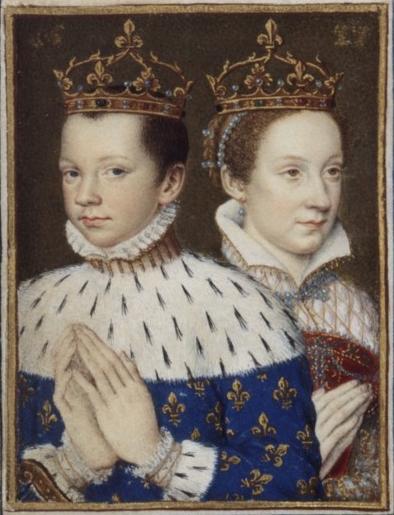Marie of Guise: Life Story
Chapter 9 : Regent of Scotland (1554 - 1560)
Following Mary’s eleventh birthday on 8th December, 1553, Henri II declared that she was of age – probably rather before the Regent Arran was anticipating such a move. The age of majority for a monarch usually being somewhere above fourteen, although there was no fixed rule. In accordance with the Treaty of Haddington, therefore Arran was no longer to be Regent on the former basis of being Mary’s heir and the “second person in the kingdom”.
There would, of course, need to be someone exercising authority and as Mary was now considered of age, she was free to appoint whomever she liked – or rather, whomever Henri II liked. Queen Mary’s choice, unsurprisingly, was Marie of Guise. The decision was accepted with mixed feelings, although by no means general hostility.
The Scots could be sure that Marie would not have any designs on the throne herself, as Arran and Lennox were suspected of harbouring, and she had proven herself a capable member of the council prior to this date. The rub, of course, was the very thing that made her Henri’s nominee – her strong allegiance to France. Her continued Catholicism did not pose an immediate problem. The majority of the Lords were still Catholic, although the Protestant group was gaining momentum.

The Court processed to Edinburgh where Arran, now Duke of Chatelherault, formally gave up his powers as Regent, and Marie was installed. In a gesture of supreme tactlessness, Marie had the crown of Scotland placed on her head by the French Ambassador d’Oisel, in theory representing her daughter, Mary, Queen of Scots, but looking very much to the entire country that the Scottish crown was in the hands of the French.Had they resisted England only to fall prey to the French?
Now Queen Mary was declared to be of age, Marie was pressed by her brother Charles, Cardinal of Lorraine to send money for her to have her own household as Queen of Scots, rather than sharing that of the French princesses. Marie, always strapped for cash, managed this by assigning the pension of 20,000 livres she received from the French king herself, and sending some 25,000 livres from her dower estates in Scotland, as well as a further contribution from her Longueville dower.

This was despite Marie’s own money troubles. There are several letters to the steward of her Ross lands, the Countess of Moray, asking the Countess to ‘mak gud and haiste payment’. She was also constrained to borrow small sums, including 200 crowns from the Countess of Montrose.
The Scottish economy still largely operated in kind and there was little actual coinage, which inhibited trade. Problems were exacerbated by the circulation of debased foreign coins. Thus, although monarchs and nobles could live well off the produce of their lands, finding large amounts of cash was difficult and made cash pensions (for which the modern mind, although not the contemporary one, might read bribes) from France and England was always an important factor in allegiance.
In part to remedy the lack of money for running the Government, in 1556 Marie requested the Estates to grant a perpetual yearly tax. This would have necessitated an inventory to be taken of every man's "estate and substance". However, the Lords rejected the demand, stating that they ‘meant not to putt their goodes in inventory, as if they were to make their last willes and testamentes.’
‘meant not to putt their goodes in inventory, as if they were to make their last willes and testamentes.’
Marie’s regency saw the stepping up of hostilities between France and the empire again. South of the border, Mary I, who became queen in July 1553, immediately made moves to bring England and the Empire back into alliance, through her marriage to the Emperor’s son, later Philip II of Spain. This put pressure on France, Henri II believing, not without reason, that England would join in any conflict, on the Imperial side. Scotland too, would be threatened by an Anglo-Imperial alliance and a strong French presence in Scotland seemed more important than ever.

Henri’s fears were confirmed when England followed Spain into war with France in June 1557. To strengthen his position, the marriage between Mary, Queen of Scots and his son Francois, took place on 24th April 1558. With the agreement of the Estates, Francois was granted the “Crown Matrimonial”, that is, he was joint sovereign with Mary and in the event of her death would remain King. As evidence that Scotland was under the ‘protection’ of France, and not in any way a vassal state, following the wedding, the two governments granted mutual citizenship to all French and Scots.




